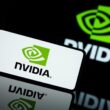From being a coin born out of a mere meme to emerging as a prominent network, Shiba Inu [SHIB] has witnessed commendable growth. With an array of updates scheduled for the year, the network seems to have endured a slight struggle. Shib: The Metaverse has been making the rounds on social media, for both good and bad reasons. While some have been lauding the network for its vision. a few others have an issue with the inclusion of Ethereum [ETH].
Despite this major divide in the community, the network decided to move ahead with its bidding process. However, this was interrupted and delayed as well. Ideally, the land bidding process on the Shiba Inu metaverse was scheduled to take place over the weekend. But, the anticipation of the community was prolonged.
This event was the first stage of the multiple-phased release of SHIB: The Metaverse. The team affirmed on Discord that they had encountered a slight delay and would roll out the first stage at the earliest.
“We ran into a little delay and we are actively working to release this first stage as fast as we can. Our early access first stage lasts 72 hours, so there will b plenty of opportunities to participate if you are one of our early access participants by locking $LEASH or your SHIBOSHI.”
First Look of the SHIB: The Metaverse Map
While the devs try to push out the bidding event, they decided to give the community something else to look into until then. The devs gave a glimpse of the Shiba Inu metaverse map. MILKSHAKE affirmed that filters pertaining to the map were integrated.
The afore seen update revealed that the bidding process will take off sooner than expected.
In addition to this, the price of Shiba Inu mirrored the market sentiment and had red smeared all over it. During press time, the altcoin was trading for $0.00002427 with a 1.79 percent drop over the previous 24-hours. The last couple of days were quite bleak for the asset as it encountered losses of nearly 10 percent.





